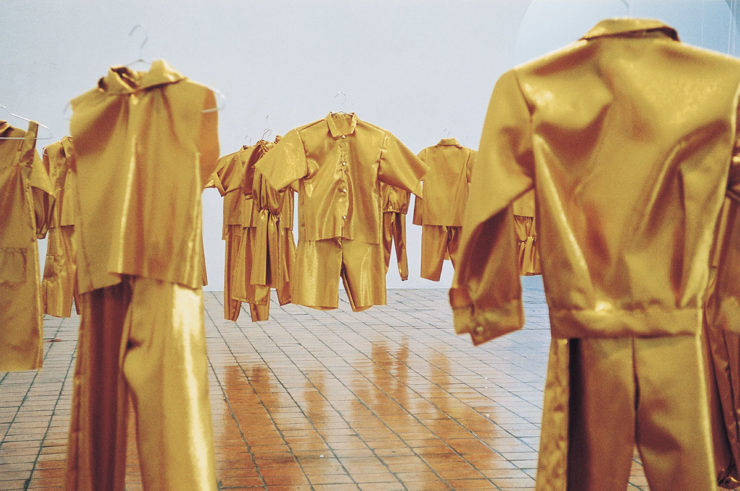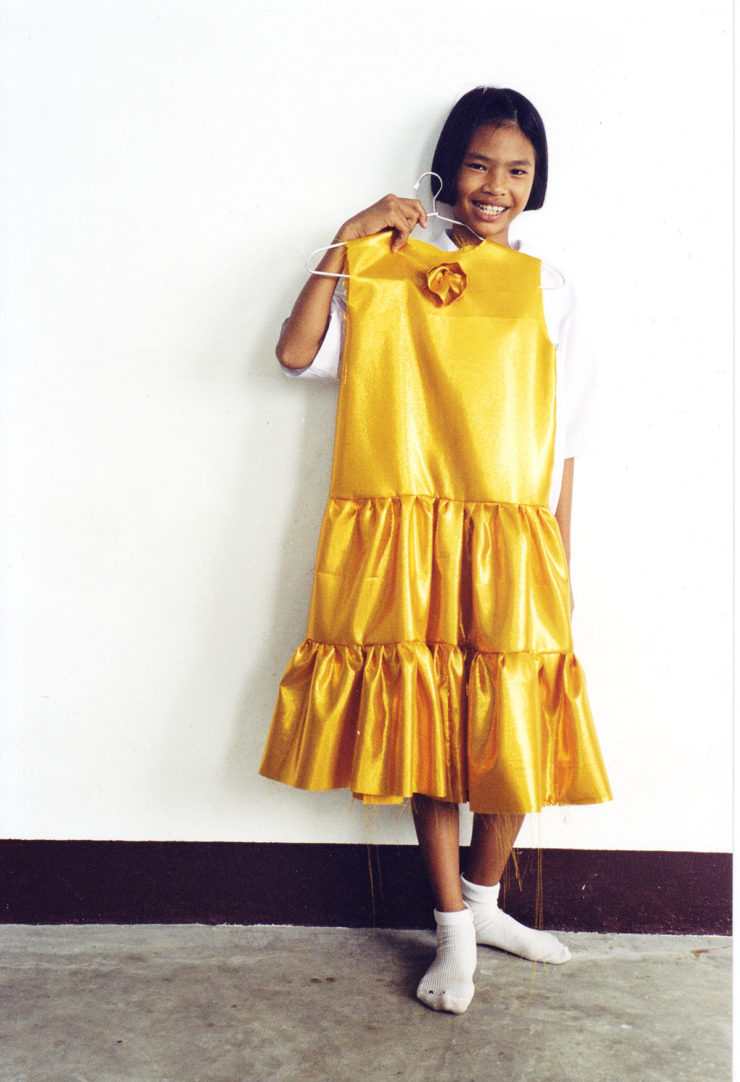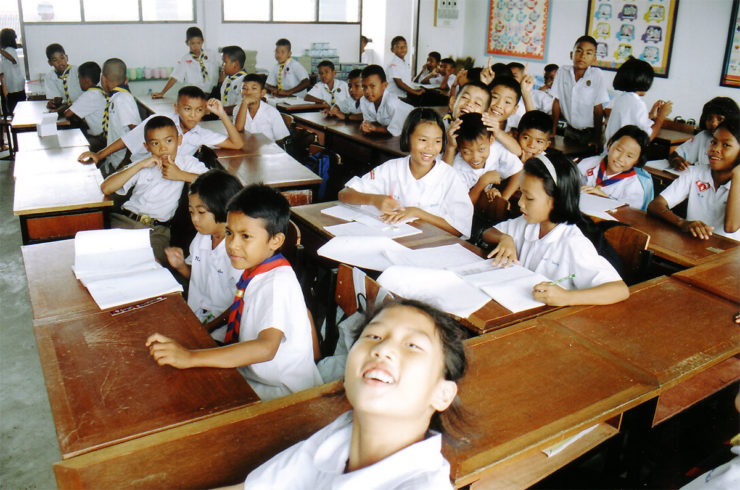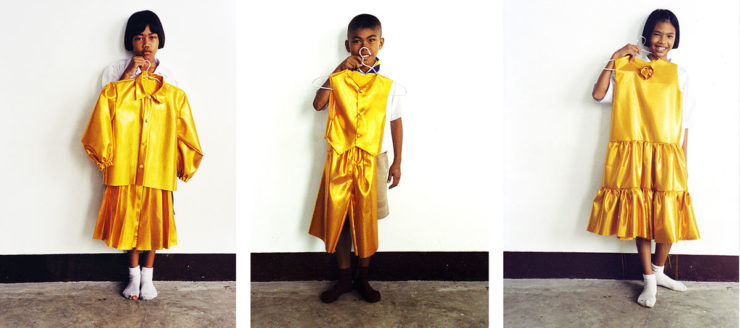2003, textile, exhibition: (hi)story
Hua Hin became popular with the Bangkok elite after King Rama VII built a palace there in 1926. Many wealthy people from Bangkok bought or built luxurious mansions to get away from the heat of Bangkok. So Hua Hin became a luxurious beach-resort and in the slipstream of this change a cultural scene came to life.
Hua Hin reminded me of Bergen, the coastal town in Holland where I grew up. Just like Hua Hin Bergen used to be a place where rich people and artists mixed. These similarities inspired me to do this project.
I decided to show a class of 44 ten year olds at a school in Hua Hin, slides of my life in Holland. They got to see pictures of my relatives, my home, my friends, the things we eat and lots more.
I then asked the children to draw and photograph and depict something of their lives for. I also asked them about their family life, religion and the King. The King is respected and admired enormously by everyone. Most Thais keep a picture of him in their home; his statue can be seen in many places. The Dutch attitude to our Queen comes nowhere near the way the Thais see the King. We regard her simply as the person who personifies the Dutch state.
In our show in Bangkok I exhibited 44 different pieces of children’s garments, hung on the ceiling. There are trousers, dresses, jackets, and blouses all made from the same gold cloth especially for this occasion. Edging the ceiling is a surrounding curtain similar to what you see in Buddhist temples, made from the same material.
The Thai seem to want to turn everything into gold. The innumerable Buddha statues are mostly painted in gold, as are the temples. Gold symbolizes material and spiritual wealth.
In my installation the sacred meets the ordinary, which is also a very Dutch way of looking at things.





